The mountain north of Pasadena has severe
and angular back canyons where the light is always
unexpected, out of place, too simple for the
clutter of the granite blocks along the creeks.
The slopes have low rough shrubs, some firebreaks.
It rains sometimes, and then the soils wash easily
through Rubio and Eaton canyons to the small
catch-basins and the storage tanks. The bedrocks
tilt toward the west, and so the seepage
drains that way. Along a wall of the Arroyo,
it comes down in springs named Tibbets, Ivy,
Flutterwheel. These are the only steady water,
and the Indiana colony had hauled it out
in tubs and barrels to their lots. They’d cleared
the greasewood from the flats and planted groves of
orange and peach trees, built their houses in the
California Style with battened redwood boards.
Nearer the Arroyo, on its terraces,
they saved a few live oak. They’d have December
picnics there and afterward would walk from
that side, down the bluff. The floor was cool,
and there were sycamore and alder, loose
irregular new channels through the willows.
On the other side, and south, below the San Rafaels,
more oak, the sun. They’d take a new way back.
Their lots extended east to the Lake Vineyard
Land and Water Company. And as a grudging
compromise between that tract and theirs,
the Central school was built in the dry neat
rows of the orchards east of where they lived.
Excursion parties from the Middle West were taken
mostly with the climate. At the citrus fairs,
the charts and produce showed them that it didn’t freeze.
Storms were rare and offered the consoling interest
of a flood in the Arroyo, loud and stupid
boulders the size of safes colliding down the wash.
A new hotel faced south on Colorado. Like the
Ward Block to its right across Fair Oaks,
it was substantial, frame, with dormers and
brick chimneys. Each had its widow’s walk
and looked as much like Boston as it needed to.
Someone from Los Angeles brought in a telephone.
He hooked it up in the store on the southeast corner,
rode back downtown and called and asked for
so-and-so, who wasn’t there. From that one
crossing, there were fewer lots each month,
new storefronts and more traffic, speculating
boomers and pikers, midnight sales, bands and free
lunches at the auctions. Owners were induced to move
east on Colorado to more eligible locations,
but the cross-streets led through dusty tent-lined
orchards to the chaparral. The boom came back
toward the center and was done. What they’d been
selling was the weather and a place to live, and
that was what was left. As their one industry,
the Novelty Works of Mr. Wakeley went on stuffing
scorpions and trapdoor spiders, horny toads,
small animals and birds. The balance of trade was
not in Pasadena’s favor.
But there were jobs. James Scoville kept men doing
rockwork on the banks above his groves. The Arroyo
narrowed there, and so he had them build a
pumphouse and a dam and turn a railroad trestle
upside down between two concrete footings.
This was the central bridge. It crossed to open
ranchland that would subdivide more slowly than the
woodlots on the bluffs. Another bridge, La Loma,
farther south, was taller, with a wider span and
sycamores around its girders. It had replaced the
Johnston bridge and made it easier to sell the tracts.
The wealth of the invisible elite went into homes on
Grand and Orange Grove, Raymond, Nithsdale Rd.,
Arroyo Terrace, Bellefontaine, new bungalows
that looked much less expensive than they were.
In their commissions, Charles and Henry Greene
used common and available materials,
stones from the Arroyo, bricks, a simple flexible
pine frame of 2 x 4s and hand-split cedar shakes,
porches that were railed with the same rough timber
as the posts and beams and trusses and the overhanging
rafters for the roof. Their costs were mostly labor.
They’d show the workers where they wanted
terraces and knolls, what trees and shrubs to save.
A local factory expanded to keep up with them,
and they’d make daily visits there to oversee
the millmen and the carvers or the quality of
lumber that had just been shipped. Their mason did
exactly what they called for on retaining-walls,
the color of the fill, which stone or clinker at what
angle to the rest. Each minor thing they cared about
earned what it had to do with matters that were
come from, what the Mayor had in mind, or
Public Works, or how the street would look with lights—
affairs like these beyond the garden stayed
accessible, a movement to and from the house
implicit in its horizontal lines. The roof was
long and relatively flat. Beams above the frames of
doors and windows were much broader than the
frames themselves and paralleled the covered
entryways and porches. Even the stairs inside
were less than vertical, each section of the railing
carved from a single piece of teak and joined to
all the other teak—the notched and interlocking
kickplates, the splines and level boards that were
the facing of the well. Their stairs were furniture.
A bench along a landing had the same insistent
finish as the inglehook, the same square
ebony caps for screwheads as the chairs and tables.
Everything showed you how it went together.
A scarf or box-joint, metal straps, continuous
sure banding from the hallway into any room.
There was tile and leaded glass, but it was mostly
wood—mahoganies and walnuts, oak, redwood or
white cedar wainscots, doweled and pegged loose
furniture in teak or birch or lignum-vitae, a smooth
self-lubricating wood that didn’t crack. The grain
inside was outside too in rafters and stiff rounded
beam-ends that were oiled and rubbed. They looked
penetrable to light, looked as if they could
absorb and carry it at any single time toward the
one best place inside. Lucile’s house on Holliston
was miles from the Arroyo. But it was imitation
Greene & Greene, a less impressive version of their
simplest large two-story frames. Its eaves on
both the north and south reached almost to the
neighbors’ lots, lots that for several blocks each way
repeated themselves with slightly different houses.
The man she’d bought it from was still a
pharmacist at Lake and Villa. He didn’t know me
and I never spoke to him. He had a massive
tumor on his neck and jaw, and I would be
amazed each time I saw him that he wasn’t dead.
Until a year or so before he’d sold the house,
there’d been an organ with the pipes extending to an
upstairs bedroom, probably the room across the hall from
Donna’s. There would have been no floor between
the first and second stories, our den and sewing room
a single shaftlike chamber that the sound would fill.
It’s just as likely that the floor had been there
all along, exactly as we knew it, with the organ
somewhere else. But of all the rooms downstairs,
only the den could open to the room above it.
With the ranks of pipes along the wall that
backed against the stairs, there would have been
high windows to the south and west, and possibly,
around three sides, a thin railed walk one got to
from the upstairs hall. I might let myself care
more about how well or what he played if it were
clearer to me how the organ looked. If I know
anything about its wood, I know it from the
oak-frame sliding doors between the den and
living room. So if the console had been quartered oak,
the case was walnut—no tracery around the pipes,
the same plain cuts as for the cabinets and counters
everywhere downstairs. How many manuals there were,
or knobs with nameplates for the pitches and the stops,
if the bench was free or fixed, or whether the
pedals for the naturals were strips that flared
slightly in their alignment toward the darker sharps—
the whole clear shape of it in that one place remains as
closed to me as how it worked, as the feeders and the
reservoirs, the valves, the layers of coarse felt between
the double panels of the swell-box; as how the sliders
kept the air below the upper-boards and pipes
and let it go and let it sound the way he
wanted it to sound, the wind inside the pipe
striking against a lip and coming back, contained and
vibrant for the time he kept it there. Its shock to the
air outside the pipe was how it sounded, the way he
wanted it to sound, or as it might have sounded
if the room were larger and the sounds dispersed and mixed
less palpably, went on together with the light or
darkness in the room. There wouldn’t have been time
between the sounds to count them to be sure that
nothing of the piece was missing. Nor was there time
for me, at any moment in the sewing room, to know
the changes that the light had worked downstairs.
Not that I would have tried to know, or done much more
than suffer my current fit of pouting. I’d hear Lucile
walk past the stairs toward the kitchen in her busy
self-important way. Maybe she’d leave. From a back
window of the sewing room, I’d see her in her car and
starting out the driveway. These were the least
obstructed windows in the house. Late in the day,
haze showed its tired agreement with the house next door,
the shingles dull and olive like the rusted screens, the
asphalt paper on the roof. I could see my aunt’s
back yard on Chester. Trees as far west of us as Lake
marked off the streets in staggered elevations—palms,
short rows of deodars and jacarandas. At night,
from a window in the southern wall, the top three
letters on the tower for the academy kept coming on
one at a time, then all together.
[...]
Richard Arkwright was a barber. He toured the
markets and the farms and bought the hair of
country girls and made it into wigs. When he
hired John Kay to build a frame for spinning
thread from the strands of cotton, manufacture was
domestic—looms and jennies in the kitchens of the
small freeholders and the farmers who would
sell their cloth to merchants. Wool was the English
staple trade, a privilege of the landed graziers.
All gentlemen wore silk. Raw cotton was a coarse
adherent fiber from Brazil and the Antilles.
It had to be opened and cleaned and have its strands
laid parallel by two large cards that worked it
back and forth between them. Drawing made the slivers
equal in thickness by redoubling them, and roving
made them thicker still and left them ready to be spun.
Arkwright’s water-frame replaced the hand’s inexpert
pulling and pushing, movements that begin and end
and can’t repeat themselves exactly. At Cromford,
with the money of two hosiers, he built a gas-lit
mill above the Derwent. He needed journeymen
clockmakers who did tooth and pinion, a smith who
forged and filed. Afraid that no one man would know
“all that I should expect he might,” he was
“determined to let no person see the works.” He wanted
“locks and hangings for the windows; good latches
for the outer doors, and for the inner doors as well.”
To make the other money come to him,
he specified as little as he could in all his
patents. And as he sold the plans, he built six
factories in Lancashire. At Glasgow, he was made
an honorary burgess and was taken to the
Falls of Clyde, at New Lanark, where he would
build another mill. He advertised for weavers,
framework-knitters. children who were seven could have
constant employment. In the riot against machines,
they burned his mill near Chorley. He was threatened:
“I will lie in wait for you in this town Nottingham
or wherever I most likely to find you. I will
ashure shute you as your name is what it is.
Dam you do you think the town must be ruled by such a
barber as you.” Contemporaries thought he was
a Newton or Napoleon. He was knighted and named
High Sheriff of Derbyshire. He claimed that
he could pay the national debt if he were
left alone to make his money; and when he died,
the income from his mills was more than that of most
German principalities. He was asthmatic. An
economist of time, he worked at english grammar as he
traveled in a post-chaise with four horses driven
always at top speed.
He lost his patents at a trial in 1785.
The industry was open. In the damp valleys,
at breaks in the long profiles of the streams,
new spinning mills went up. They were too far
outside the towns to worry that they’d be
inspected—close enough to send their thread
to upland workshops by the new trans-Pennine
turnpike roads, or by the new canal that crossed the
valley of the Calder, through the Craven drumlins
east to the other watershed, and Leeds.
There was so much thread that barns were fitted up
with handlooms that could weave good fustians and cambrics.
Cotton was its own new country, and the landlords
feared the moneyed men. Land could itself be
capital, the business of the aristocracy.
Each landlord had his broken straggling plots,
their furrows running lengthwise to the rounded
headlands where the plough would turn. He knew
which land was his, but it was open and was grazed
collectively by several owners. Between
harvest and sowing, even his farmers’ pigs would
graze there with the sheep. Cows grazed the catchwork
meadows on the terraces, or at the watersides.
Enclosure was the landlords’ plan to change their
strips of arable to larger straighter fields.
They would appropriate the wastes—the marshes and moors,
the peat-bogs where the farmers got their fuel.
Commons had been “a profit which a man hath in the
land of another, as to pasture beasts thereon,
cut wood, catch fish, hunt coneys, and the like.”
In most of the Midland parishes, there were now
Acts for Enclosure of the Open and Common Fields,
new roads with wide grass verges to a ditch,
then quickset hedgerows, ash, occasional small
farmsteads with a croft, no lanes, the landlord’s
manor and his park, and in the fields the
thickets for his foxes. It cost him less to
graze than till. The stiff clay soils would hold
a year of wheat, another of spring corn, lie fallow.
The land would yield him more if he could save
the labor of his farmers and the cottagers.
Tenure at Will was his prerogative to put them
off the land when he was through with them.
As he engrossed more farms, they set his hedges,
drained and marled the looser tracts and planted
clover, turnips, and lucerne. He managed
breeds of stock and turned them out to graze the even
turf across the hillocks. Enclosure had made
“fat beasts, and lean poor people.” With no one skill
peculiar to themselves, they left the villages for
workshops in the north. The Earl of Leicester said
“I look around and see no other house than mine.
I am like the ogre in the tale, and have eaten up
all my neighbors.”

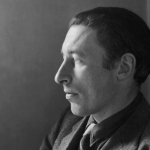
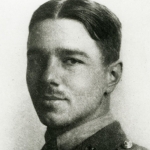
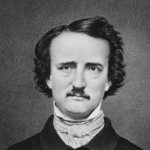
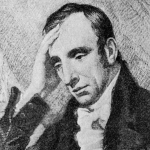

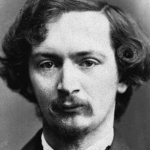
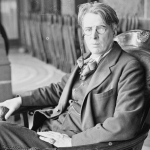




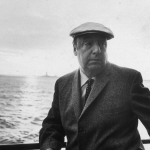




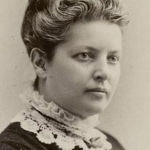

Comment form: